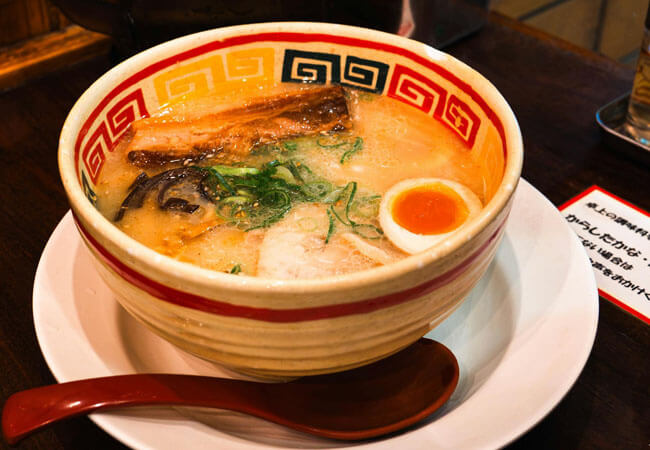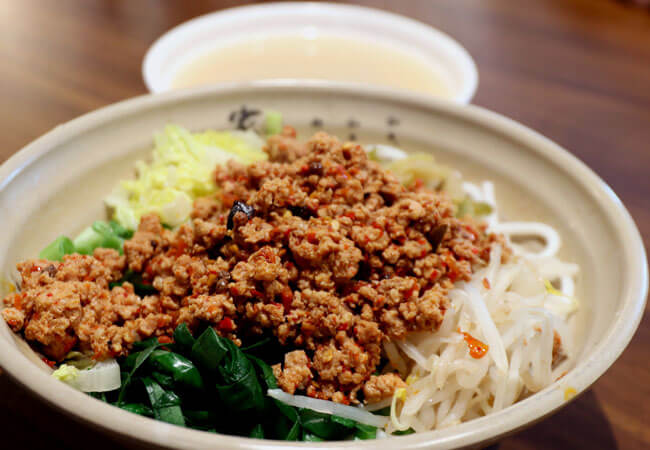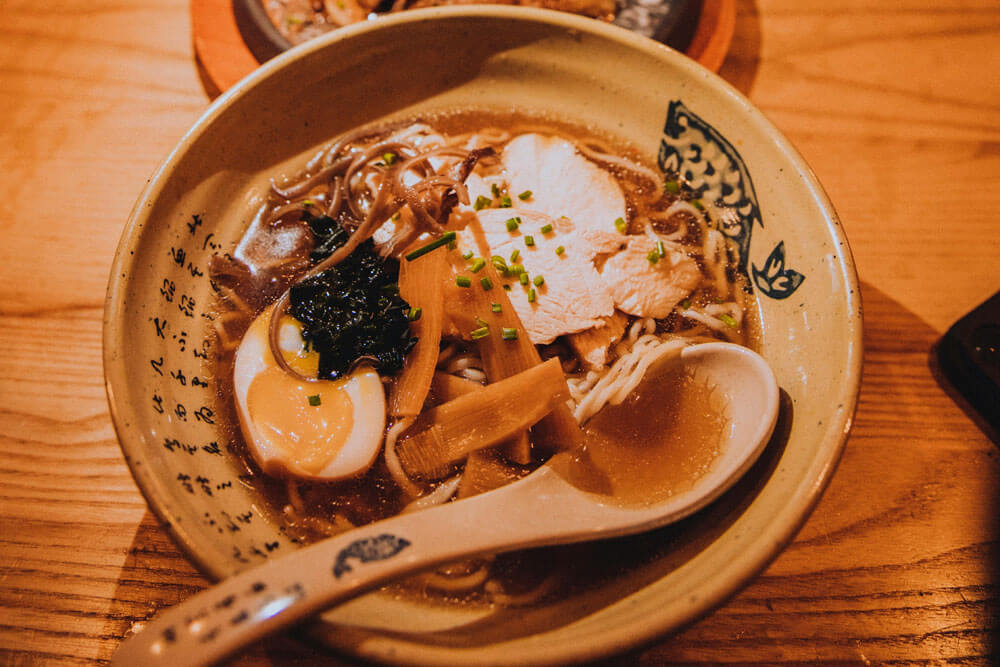Curled up on your cozy couch, slurping down a steaming bowl of savory noodles, you might find yourself pondering a culinary conundrum: Is ramen Chinese or Japanese? It’s a question that tickles the taste buds and sparks curiosity in food lovers worldwide.
In this blog article, we’ll embark on a flavorful journey through the tangled history of this beloved dish, uncovering the surprising twists and turns that have shaped its identity. So, grab your chopsticks and get ready to savor every morsel of knowledge as we unravel the mystery of ramen’s origins.
Yes, most of the Ramen you see is Japanese food
When you stroll down bustling city streets lined with neon-lit ramen shops, it’s hard to deny that the majority of the ramen you encounter is unmistakably Japanese. From the bustling alleys of Tokyo to the trendy districts of New York City, it’s the iconic Japanese ramen bowls that steal the spotlight. These bowls are often characterized by their rich, umami-packed broths, chewy noodles, and an array of toppings like tender slices of chashu pork, marinated bamboo shoots, and perfectly soft-boiled eggs.
With each slurp, you’re transported to the heart of Japan, where ramen culture thrives and innovation knows no bounds. While the dish may have its roots in China, it’s the Japanese who have perfected and popularized it, making ramen an integral part of their culinary identity and a global gastronomic phenomenon. So, next time you’re in the mood for a comforting bowl of noodles, chances are you’ll find yourself indulging in the exquisite flavors of Japanese ramen.
But Ramen is originated from China
While the bustling streets of Tokyo may be synonymous with slurping noodles, it’s essential to acknowledge that the origins of ramen can be traced back to China. Centuries ago, Chinese immigrants brought their noodle-making expertise to Japan, laying the foundation for what would eventually evolve into the beloved dish we know as ramen.
The Japanese word for ramen, “ラーメン” (rāmen), is indeed believed to have originated from the Chinese term “拉麵” (lāmiàn), which means “pulled noodles.” This reflects the historical connection between Chinese and Japanese culinary traditions, with the concept of noodles being introduced to Japan from China, where they were traditionally made by hand-stretching dough into long, thin strands.
Historical records suggest that these early iterations of ramen were simple, wheat-based noodles served in broth, a culinary tradition that resonates with the noodle soups found in regions like Guangdong and Fujian.
As time passed, Japanese chefs infused their own unique flavors and techniques into the dish, refining it to suit local tastes and preferences. So, while Japanese ramen may reign supreme in today’s culinary landscape, its roots in Chinese cuisine are an integral part of its storied history, adding depth and richness to its cultural significance.
Japanese Ramen Vs. Chinese Ramen
Japanese Ramen:
- Rich Broths: Japanese ramen is known for its rich, flavorful broths, ranging from creamy tonkotsu to clear shoyu.
- Diverse Noodle Varieties: From thin and straight to thick and curly, Japanese ramen noodles come in a variety of shapes and textures, each suited to different broth styles.
- Toppings Galore: Japanese ramen bowls are often adorned with an array of toppings such as chashu pork, soft-boiled eggs, bamboo shoots, nori, and green onions, adding layers of flavor and texture.
- Regional Variations: Different regions of Japan have their own unique styles of ramen, each with its own distinct characteristics and flavor profiles, such as Hokkaido’s miso ramen and Kyushu’s tonkotsu ramen.

Chinese Ramen:
- Wheat-Based Noodles: Chinese ramen typically features wheat-based noodles, which can vary in thickness and texture depending on the region and style of the dish.
- Lighter Broths: Unlike the rich broths of Japanese ramen, Chinese ramen often features lighter, clearer broths, flavored with ingredients like chicken, pork, or vegetables.
- Simple Toppings: Chinese ramen toppings are often more straightforward, with common additions including sliced meat, leafy greens, and occasionally, a soy sauce-marinated egg.
- Regional Diversity: Just like in Japan, China boasts a diverse array of regional ramen styles, each with its own unique ingredients and preparation methods, such as the spicy Sichuan-style dandan noodles and the aromatic Beijing-style zhajiangmian.

The Chinese noddle family
The Chinese noodle family is as diverse as it is delicious, offering a wide array of noodle varieties to tantalize the taste buds. Here are some members of this flavorful family:
1. La Mian: These hand-pulled noodles are a sight to behold, skillfully stretched and twisted into long, chewy strands. They’re commonly served in rich broths or stir-fried with meat and vegetables.
2. Dao Xiao Mian: Also known as knife-cut noodles, these thick, irregularly-shaped noodles are made by slicing dough directly into boiling water. They’re often served in hearty soups or stir-fried with savory sauces.
3. Liangpi: These translucent, chewy noodles are made from wheat or rice flour and are typically served cold with a spicy, tangy sauce made from chili oil, vinegar, and garlic.
4. Dan Dan Mian: Originating from Sichuan province, these noodles are served in a spicy, numbing sauce made from chili oil, Sichuan peppercorns, and ground pork, topped with crushed peanuts and green onions.
5. Zhajiangmian: Hailing from Beijing, this dish features thick wheat noodles topped with a savory, meaty sauce made from ground pork or beef cooked with fermented soybean paste, along with diced vegetables.
6. Chow Mein: These stir-fried noodles are a staple of Chinese-American cuisine, typically made with thin egg noodles tossed with vegetables, meat, and a flavorful sauce.
7. Hong Kong-style Noodles: These thin, springy noodles are often served in soups or stir-fried with a variety of toppings, such as barbecue pork, shrimp, and vegetables.
Each member of the Chinese noodle family brings its own unique texture, flavor, and cultural heritage to the table, ensuring there’s a noodle dish to satisfy every craving.
How Jinyu can help
Jinyu Translation is uniquely positioned to offer a range of valuable assistance in the realm of Chinese food culture experience, China local travel guide, and Chinese food business assistance.
With our ISO-certified quality assurance, 20 years of translation experience, and commitment to confidentiality, you can trust us to be your reliable partner in navigating the complexities of Chinese food culture, travel, and business. Let us help you unlock the full potential of your culinary endeavors in China.

